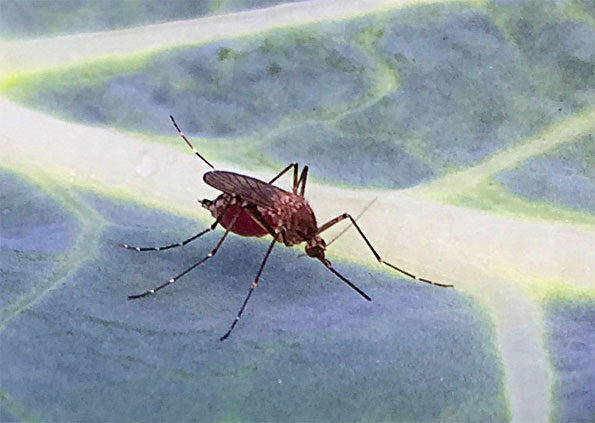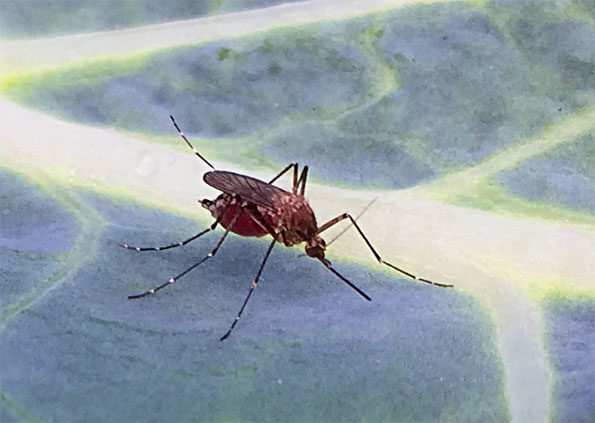
Lake County, Ill. – A mosquito “pool” (batch of mosquitoes) sampled on June 4, 2020 in Hawthorn Woods, Illinois has tested positive for West Nile virus. This mosquito pool is the first confirmed indicator of West Nile virus presence in Lake County in 2020.
“As we approach the summer season, our time outdoors increases, and so does our exposure to mosquitoes,” said Mark Pfister, Executive Director of the Lake County Health Department and Community Health Center. “Please remember to ‘Fight the Bite’ and protect yourself and your family from mosquitoes that may carry West Nile virus.”
Practice the “4 Ds of Defense” to protect yourself and your family from mosquitoes:
Drain: Drain standing water from items around your home, yard, and business.
Defend: When outdoors, use an insect repellent containing DEET, picaridin, oil of lemon eucalyptus, 2-undecanone, or IR3535 and reapply according to label directions.
Dawn and Dusk: Protect yourself all day and night, and wear repellent outdoors during these prime times for mosquito activity.
Dress: Wear long sleeves, pants, and closed toe shoes when outdoors to cover your skin.
Culex pipiens mosquitoes, which are the primary carriers of West Nile virus, are most abundant when the weather is hot. Residents can help prevent these mosquitoes from breeding by eliminating areas of stagnant water from their properties. Items like buckets, gutters and plant containers, kiddie pools, and any other items holding water around homes and businesses can become breeding sites.
The Lake County Health Department’s Mosquito Surveillance Program coordinates mosquito trapping results throughout Lake County. Mosquitoes are tested weekly for West Nile virus. The program also monitors reports of dead birds (an early sign of the presence of the virus) and investigates areas of stagnant water for the presence of mosquito larvae, specifically from the Culex mosquito, which is the primary carrier of West Nile in Illinois.
In 2019, 61 pools or batches of mosquitoes tested positive for West Nile virus. Since 2002, there have been 73 confirmed human cases of West Nile virus in Lake County, as well as four confirmed deaths.
Most people infected with West Nile virus have no symptoms of illness. However, some may become ill usually 3 to 15 days after the bite of an infected mosquito. In rare cases, severe illness including meningitis, encephalitis, or even death, can occur. Brain damage is possible among the most seriously ill, involving significant adjustments to lifestyle and capabilities in activities of daily living for years following the infection. People older than 50, and individuals with weakened immune systems are at higher risk for severe illness from West Nile virus.
West Nile virus (WNV) is usually transmitted through the bite of a Culex pipiens mosquito, commonly called a house mosquito, that has picked up the virus by feeding on an infected bird. Common symptoms include fever, nausea, vomiting, headache and muscle aches. Following the 3 to 15-day incubation period, symptoms may last from a few days to a few weeks.
The illness that is caused by WNV is known as West Nile fever, which includes the symptoms of fever, nausea, vomiting, headache and muscle aches. Some or all of these symptoms affect about 20 percent of people infected. However, about 80 percent of people infected with West Nile virus do not have any symptoms, and this is a big part of the reason that WNV is under-reported.
The severe illness that is caused by WNV is known as West Nile neuroinvasive disease (WNND). Severe illnesses related to WNV infection include meningitis (WNM); encephalitis (WNE); West Nile meningoencephalitis; which involves inflammation of both the brain and meninges; and West Nile poliomyelitis (WNP). Least common is WNP, which is characterized by the acute onset of asymmetric limb weakness or paralysis in the absence of sensory loss. Pain sometimes precedes the paralysis, which can occur in the absence of fever, headache, or other common symptoms associated with WNV infection. Involvement of respiratory muscles, leading to acute respiratory failure is possible.
The severe forms often require life support in an Intensive Care Unit (ICU). There is no specific cure for the severe illnesses, but life support with oxygen, mechanical respiration support and nutrition are required while patients are in a near coma state. Although rare, severe WNV infections can cause unstable gait, high fever with rapid breathing, low oxygen levels, respiratory arrest, severe tremors, brain damage and death.
Find more prevention tips and information on West Nile virus at www.FightTheBiteNow.com. Residents can also call the Health Department’s West Nile hotline to report areas of stagnant water, report locations of dead birds, and obtain more information on the signs and symptoms of West Nile virus. The Lake County West Nile virus hotline number is 847-377-8300.
Last year the first Illinois batch that tested positive for West Nile virus was in Wayne, Illinois in DuPage County. The batch was collected on May 21, 2019. In 2018, the first mosquitoes to test positive for West Nile virus were collected on May 25, 2018 in Glenview and Morton Grove in Cook County by the North Shore Mosquito Abatement District.
The IDPH has not yet published any positive batch test results for Illinois, but resources may be overwhelmed with COVID-19 pandemic. It is not yet confirmed whether the positive test in Hawthorn Woods is the first positive batch for Illinois in 2020.
The first human infection recorded in 2019 was a man in his 70s, who was diagnosed in late July 2019.
^^ MOBILE? USE VOICE MIC ^^
facebook …
Please ‘LIKE’ the ‘Arlington Cardinal Page. See all of The Cardinal Facebook fan pages at Arlingtoncardinal.com/about/facebook …
Help fund The Cardinal Arlingtoncardinal.com/sponsor
20240105-1435future
THANKS FOR READING CARDINAL NEWS
 Inland Floodwater (Aedes vexans) or Asian Tiger Mosquito (Aedes albopictus) on Broccoli leaf.
Inland Floodwater (Aedes vexans) or Asian Tiger Mosquito (Aedes albopictus) on Broccoli leaf.
West Nile virus is primarily transmitted by mosquitoes, mostly species of the genus Culex, but mosquitoes and ticks have also been found to carry the virus. Aedes albopictus bite diverse host species enabling the Asian tiger mosquito to be a potential bridge vector for certain pathogens such as West Nile virus.
